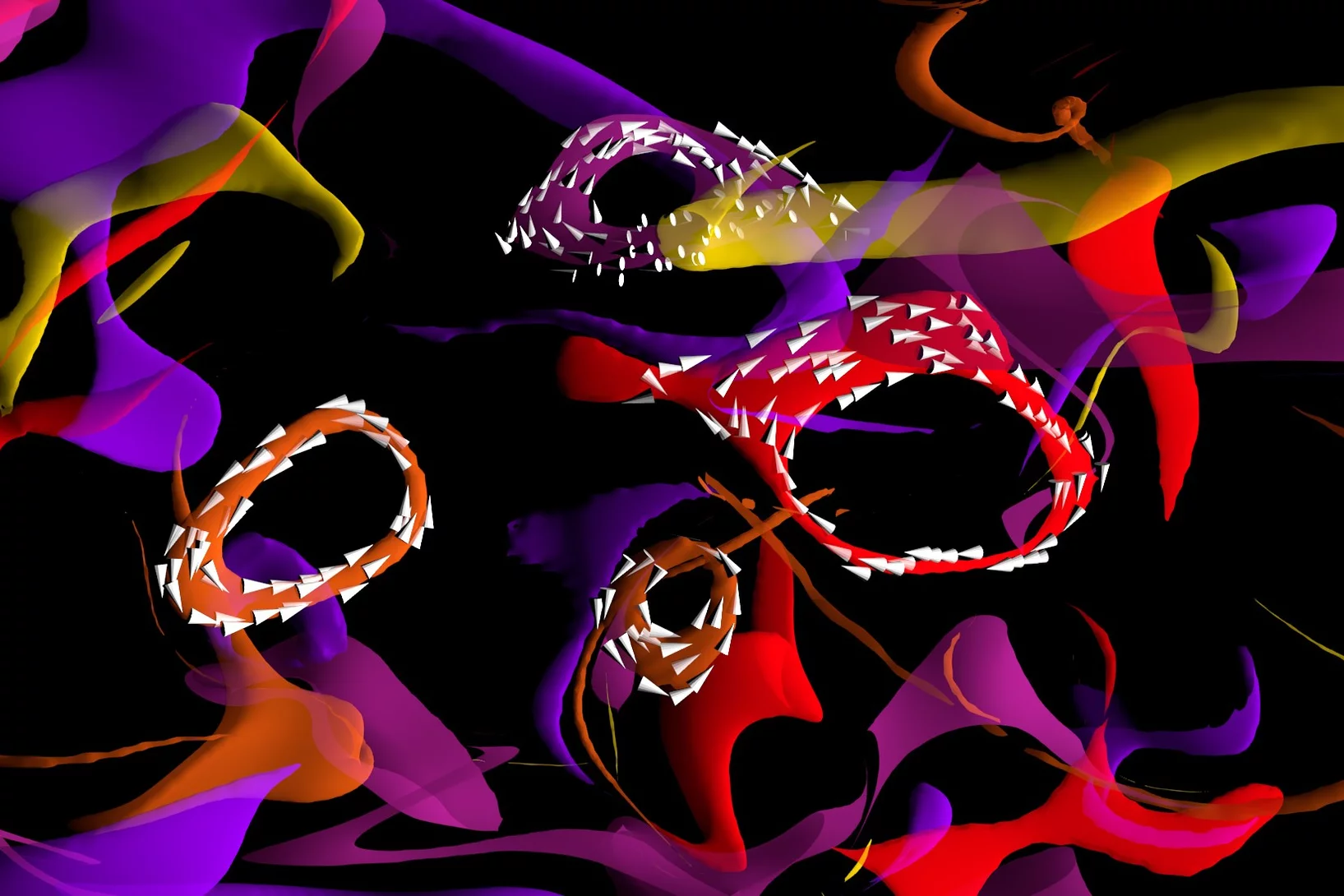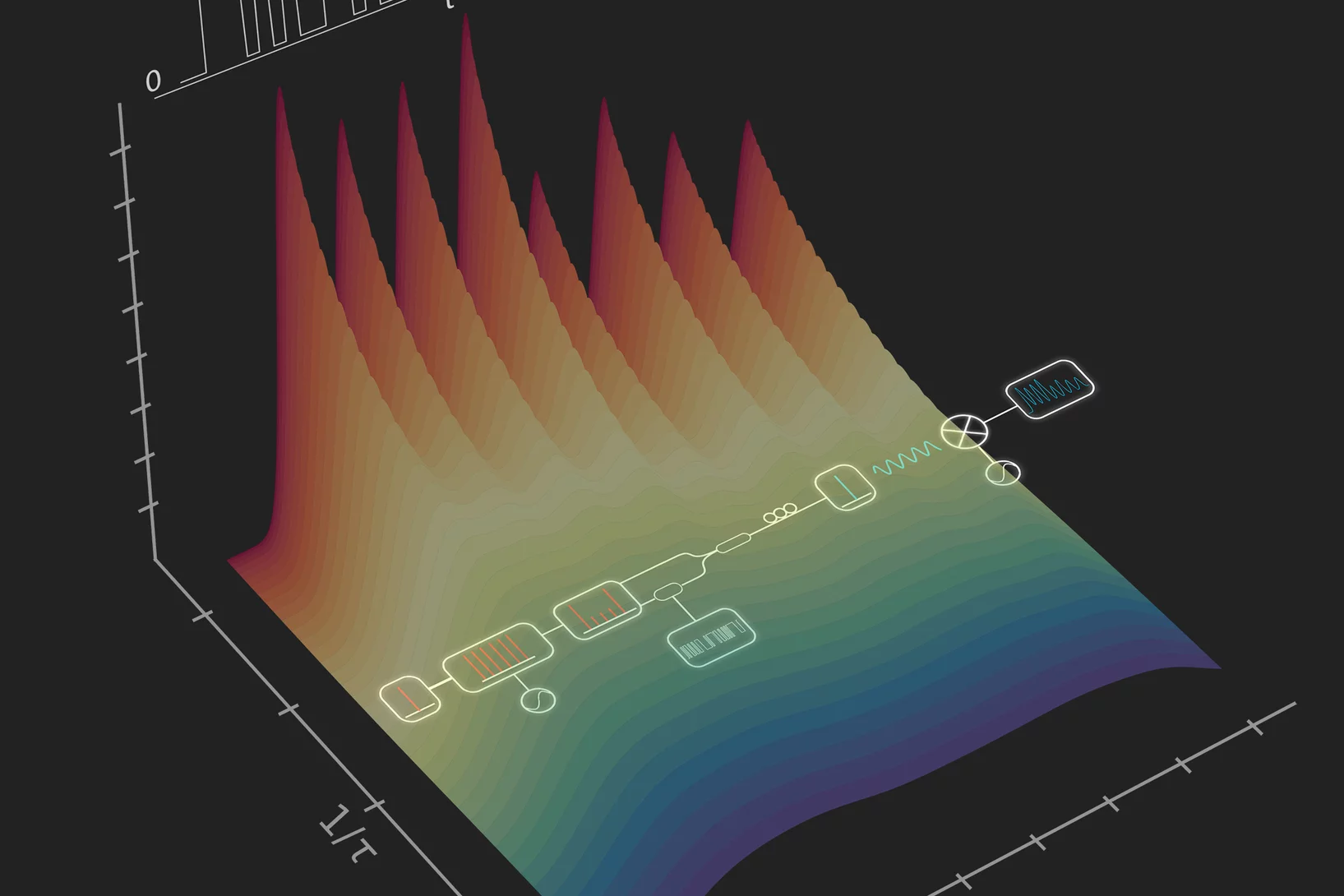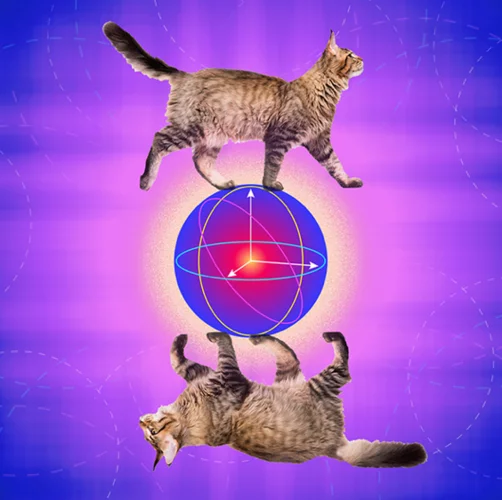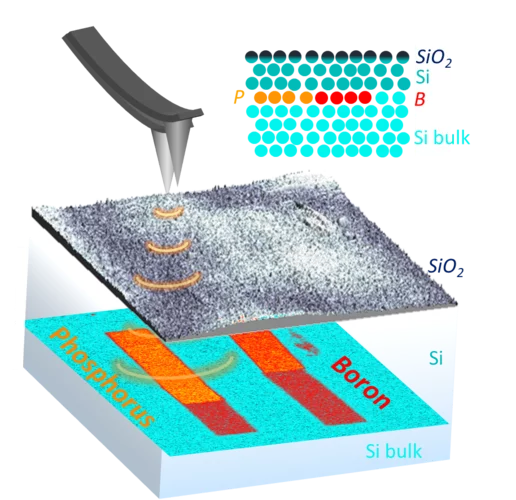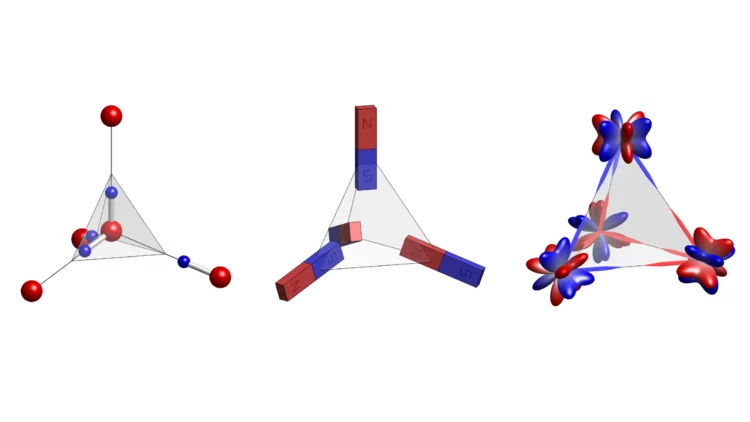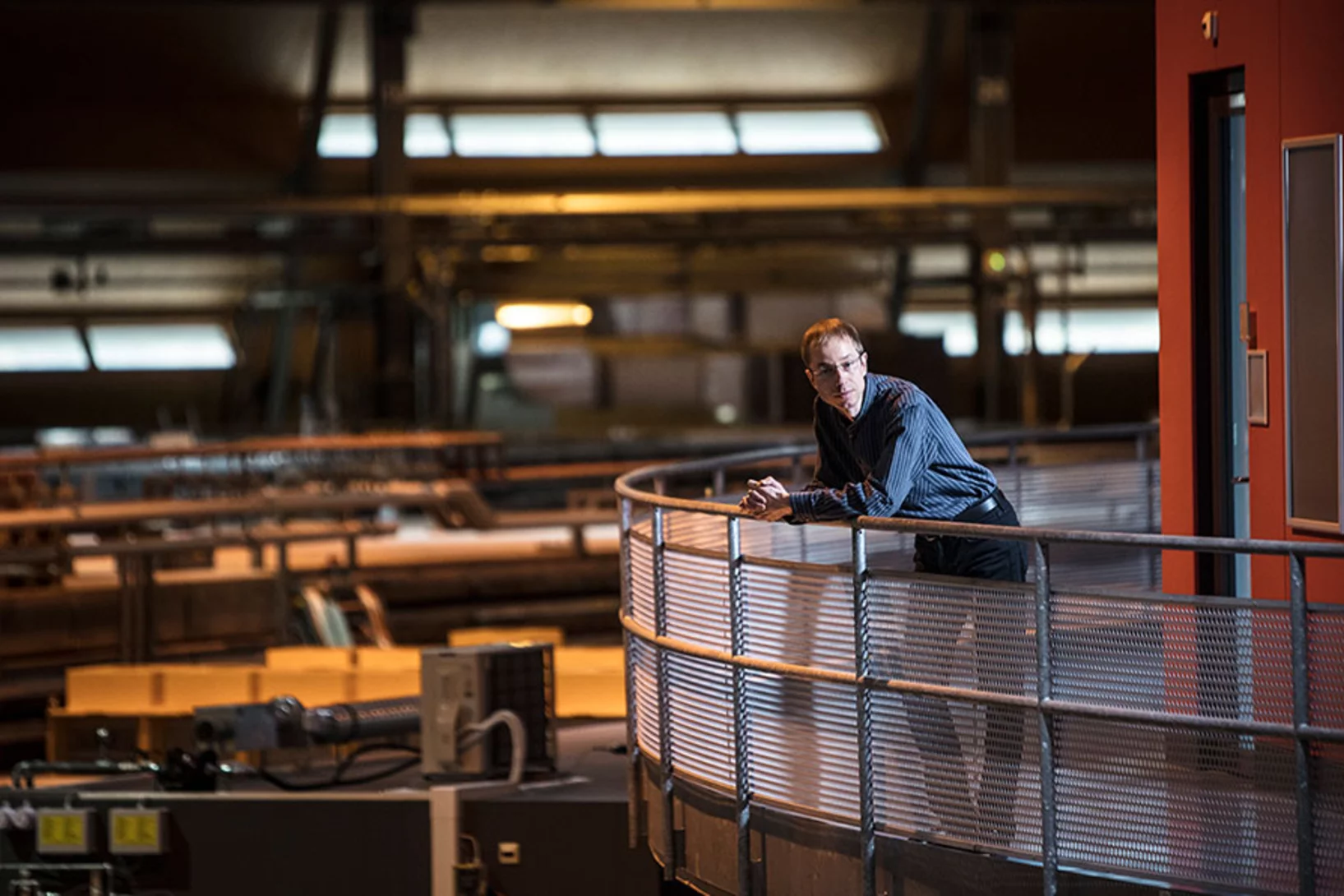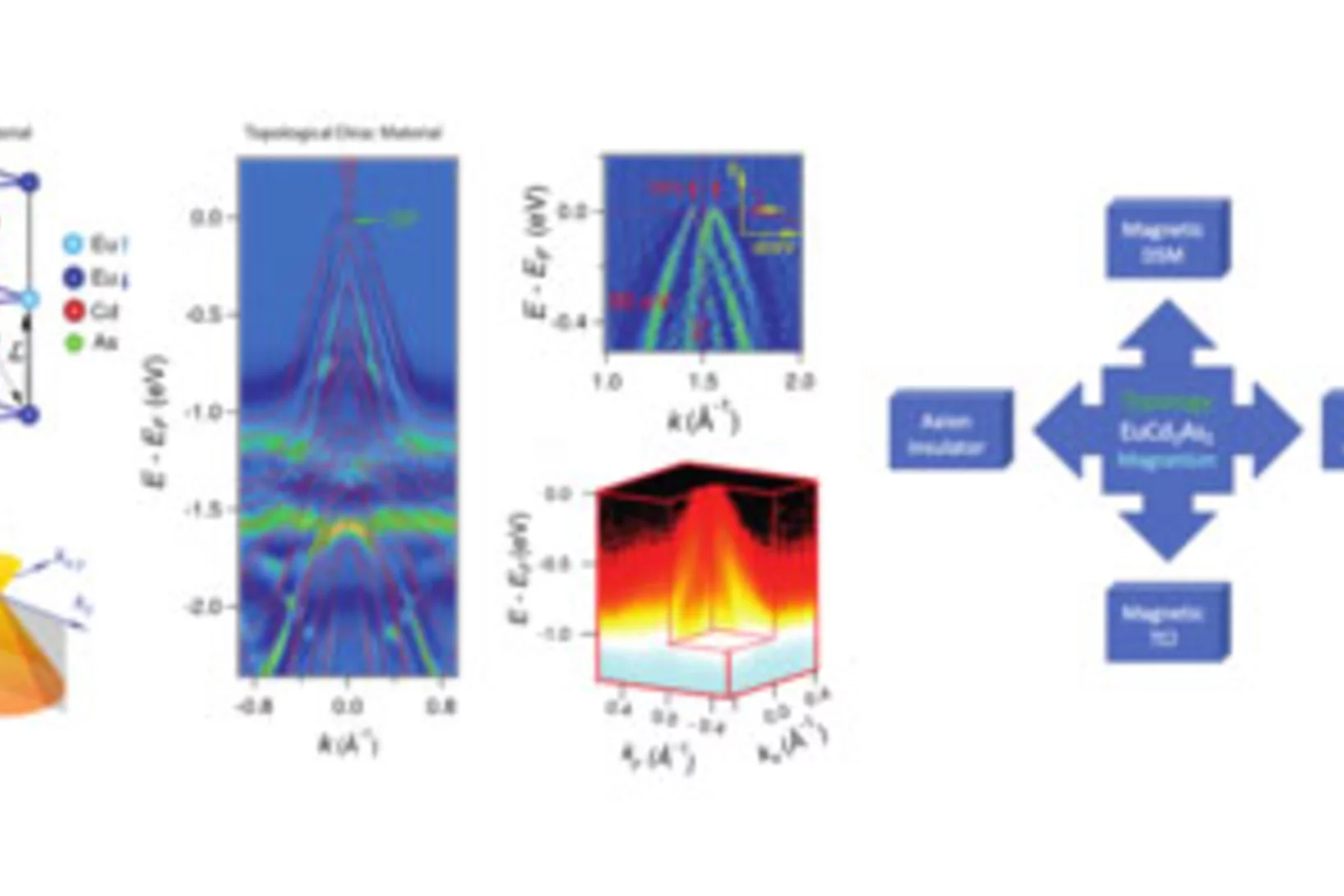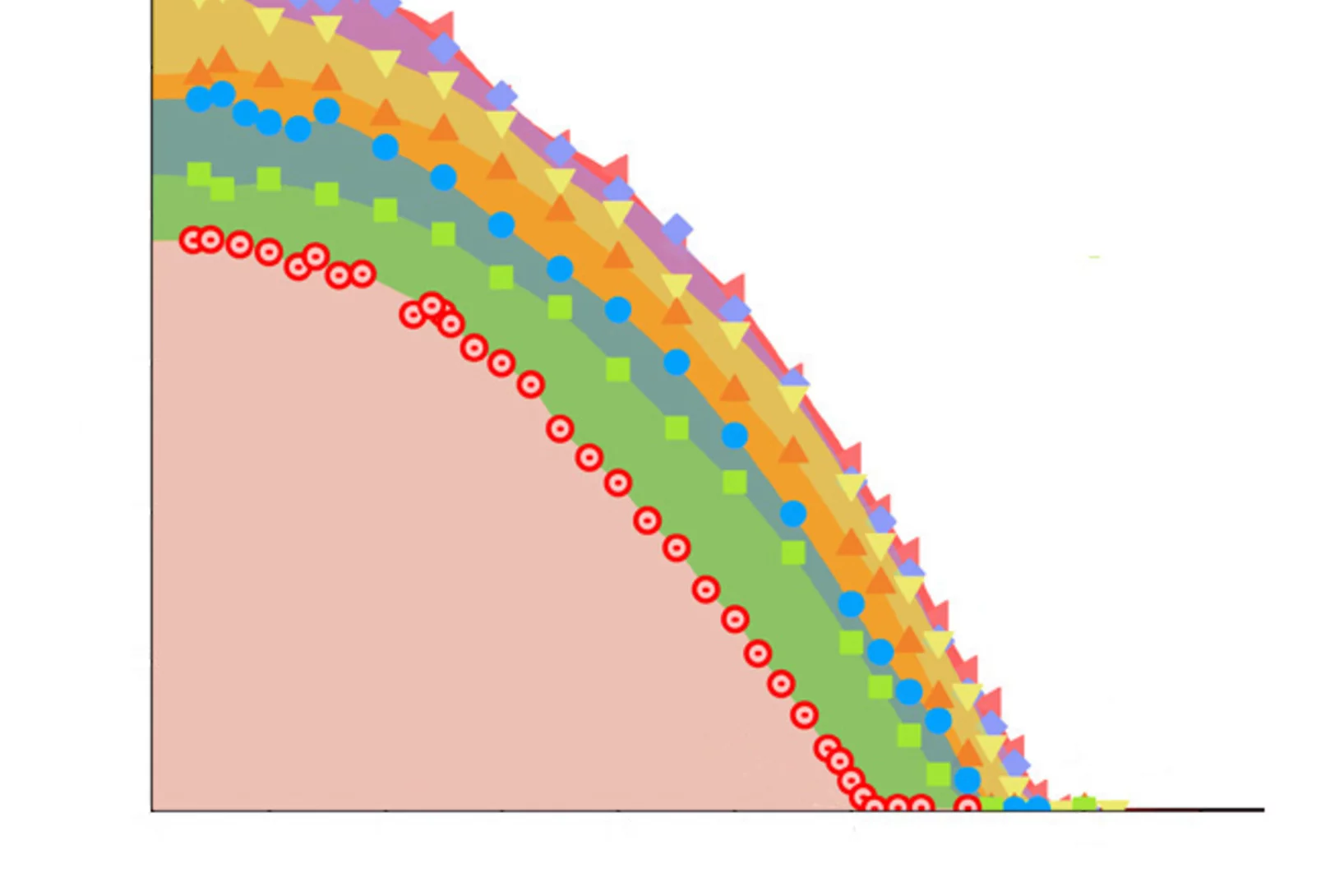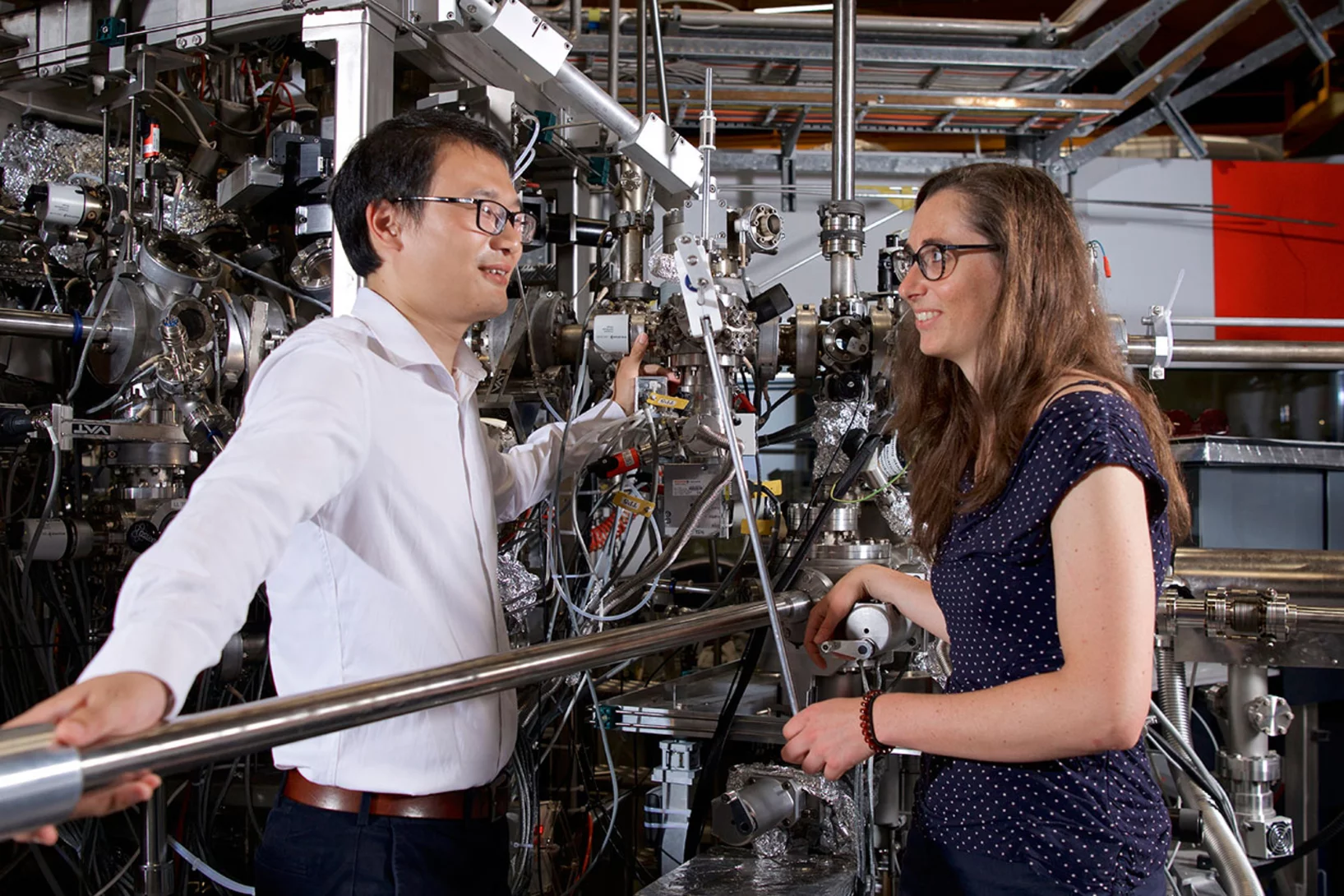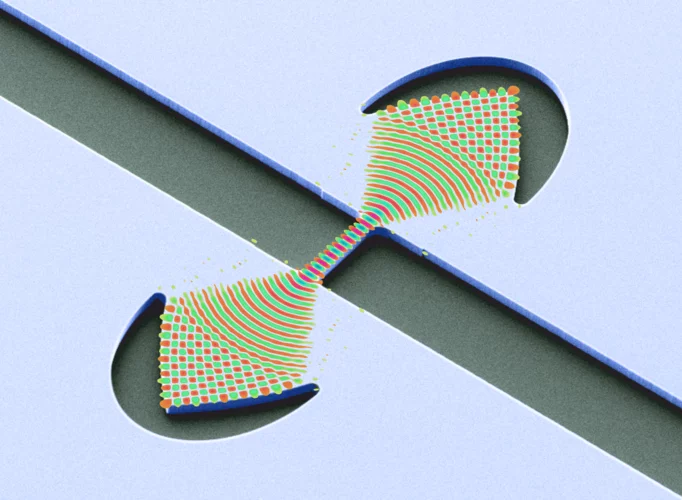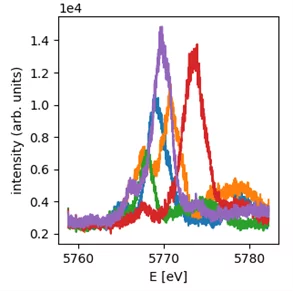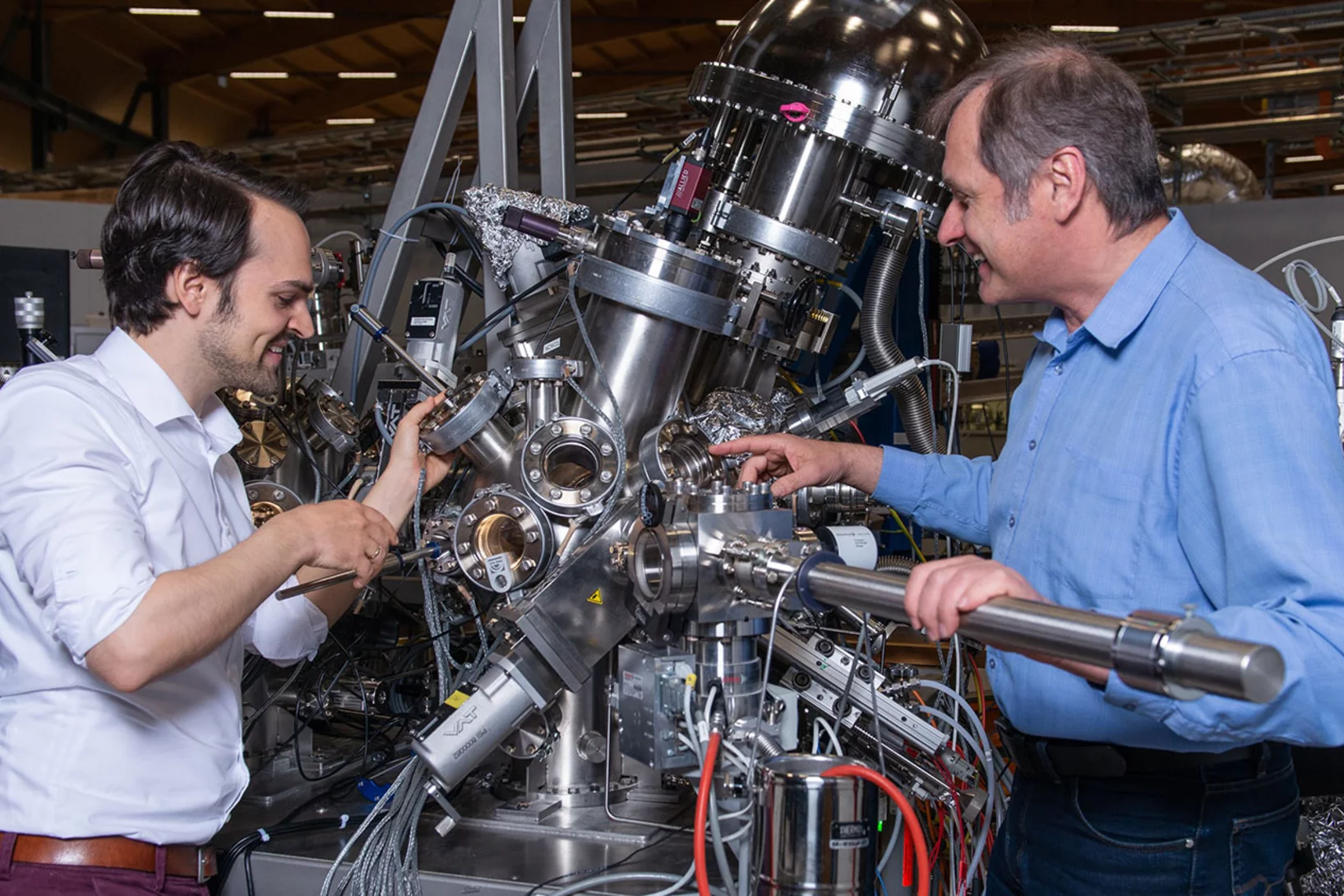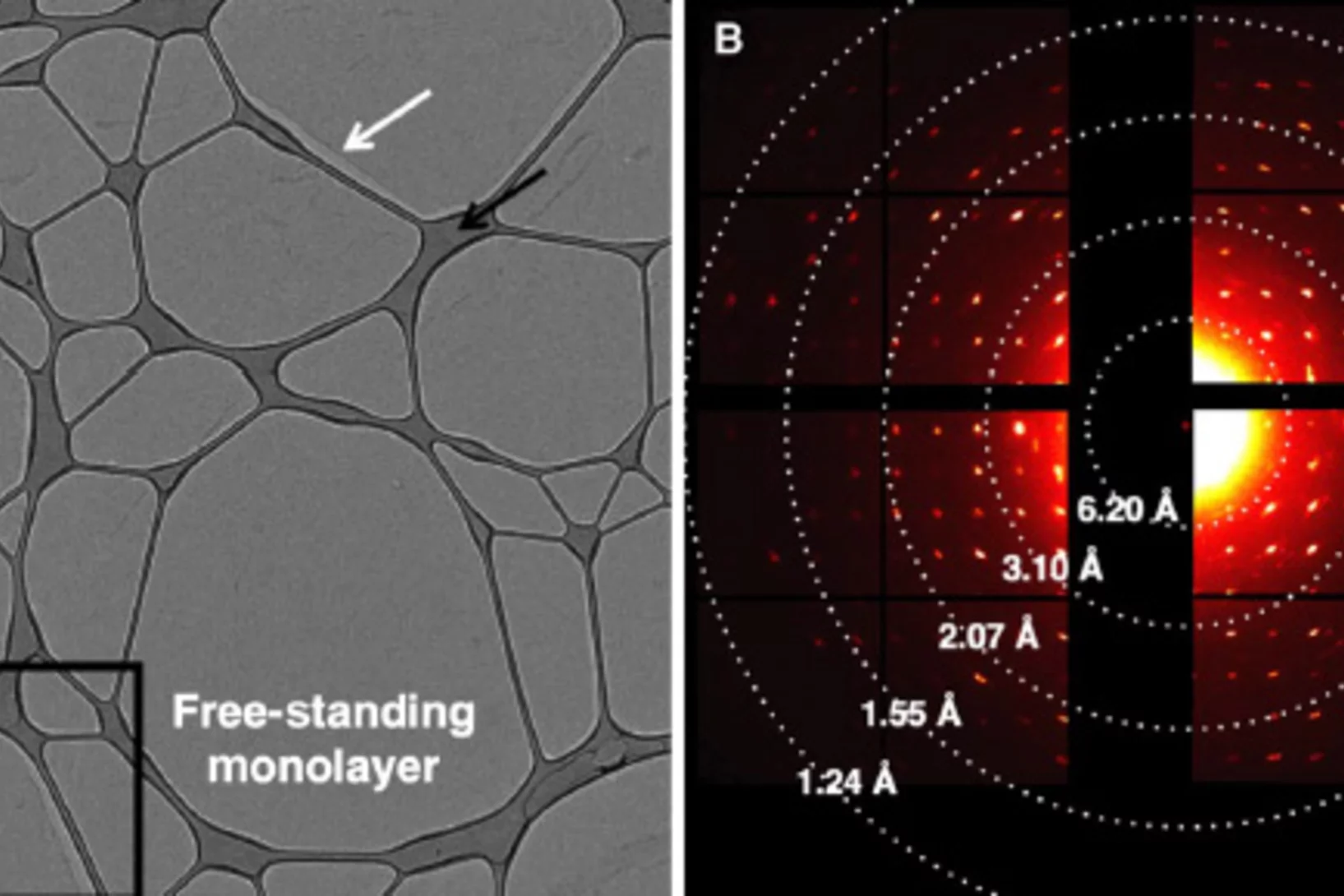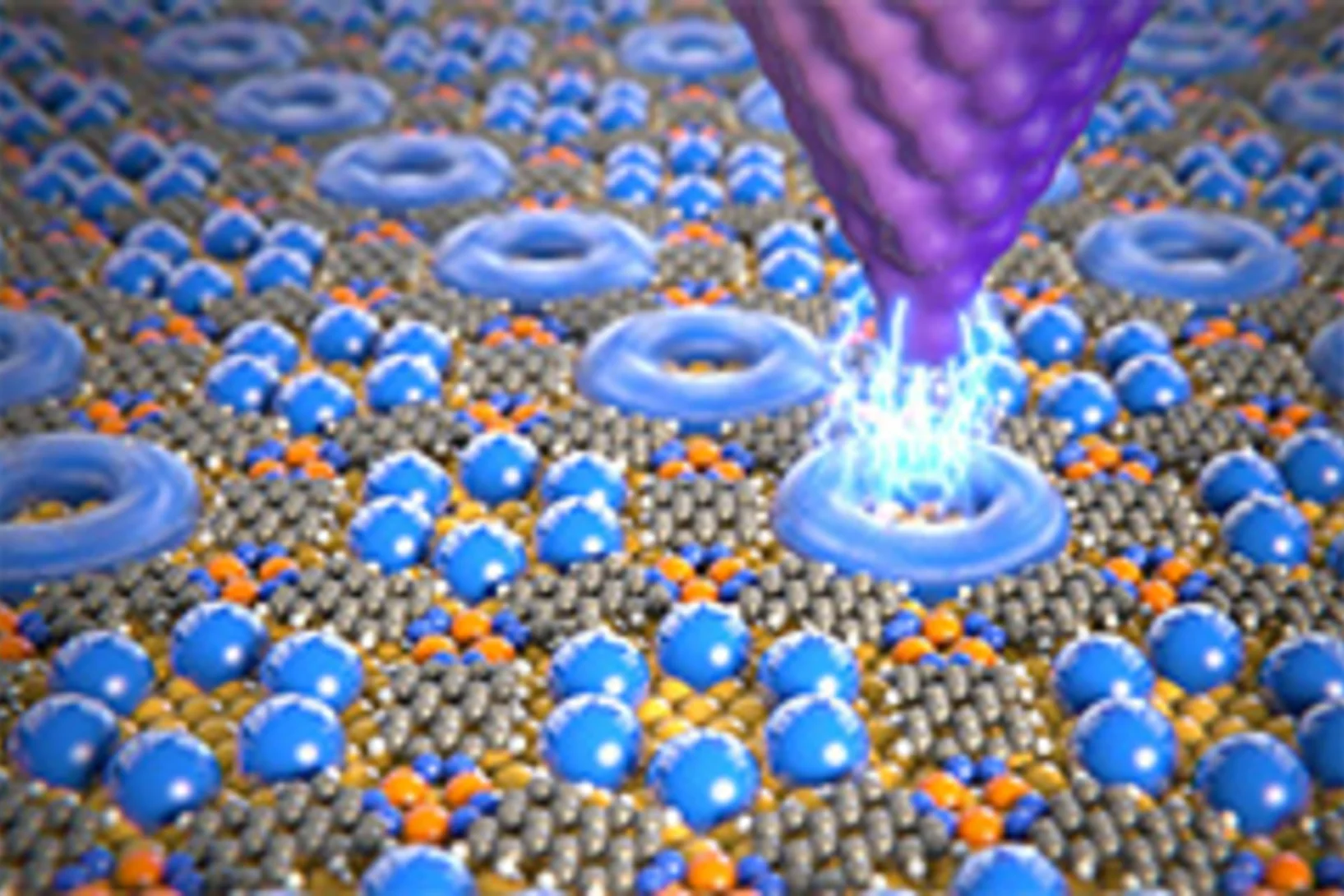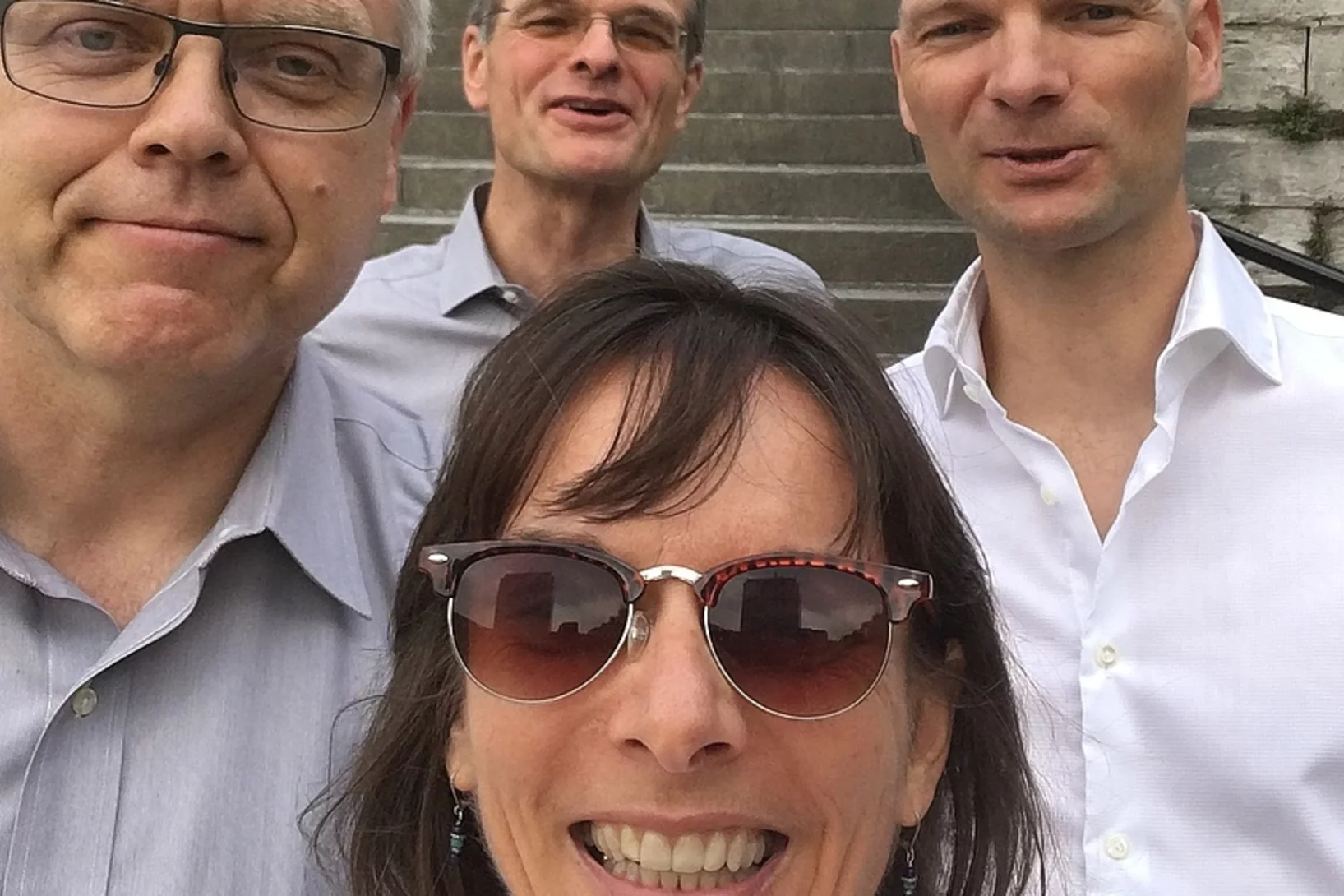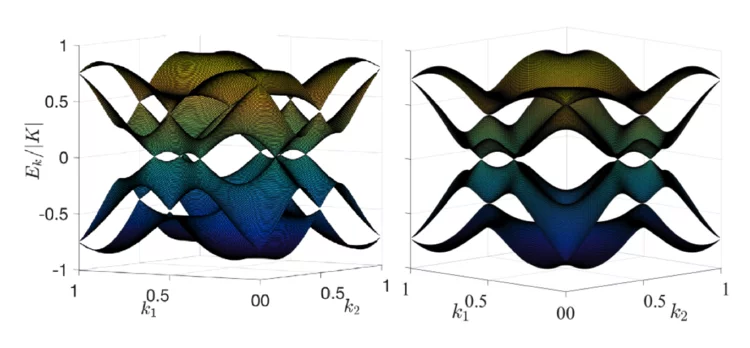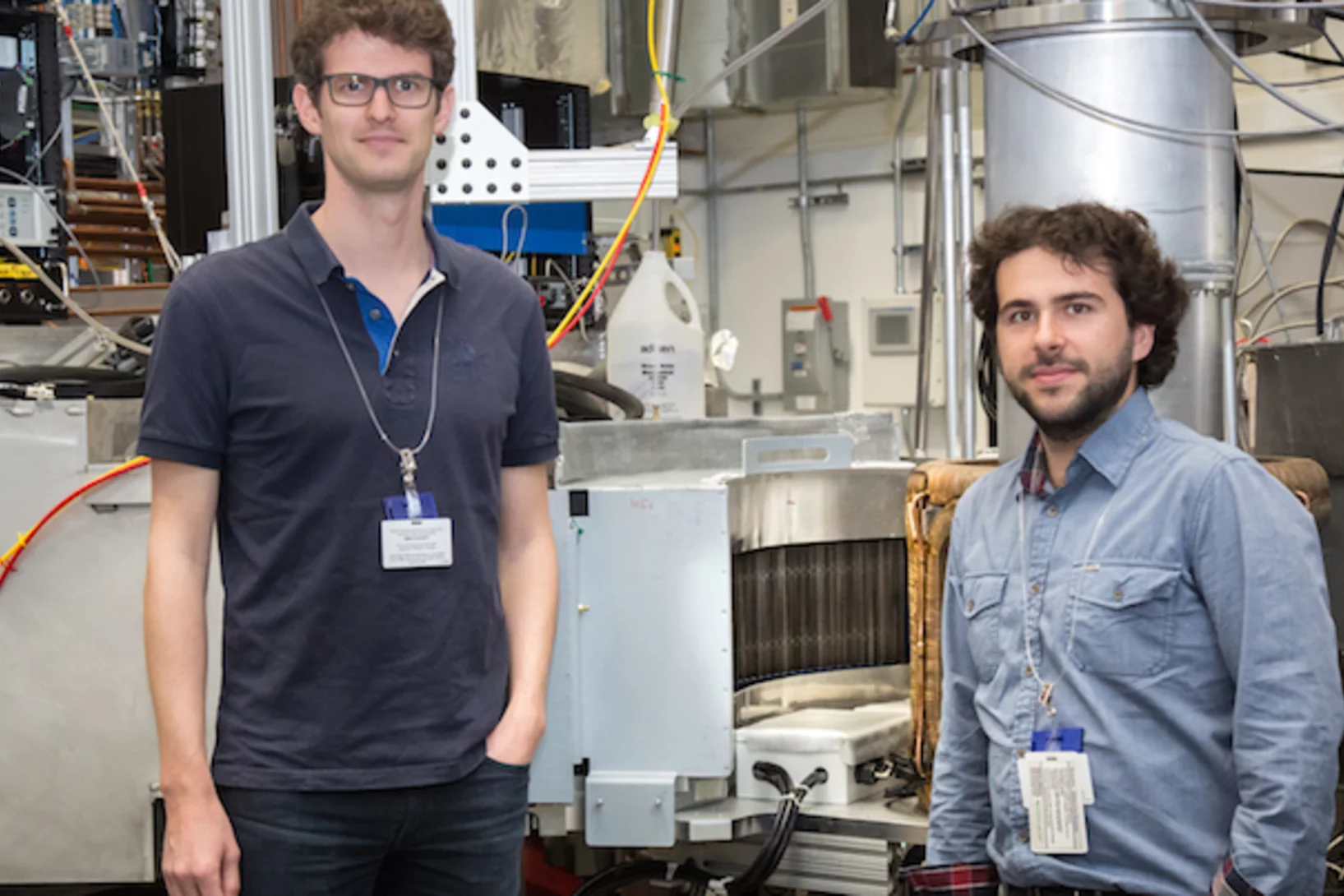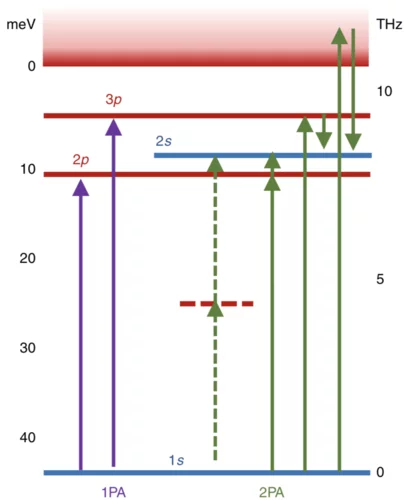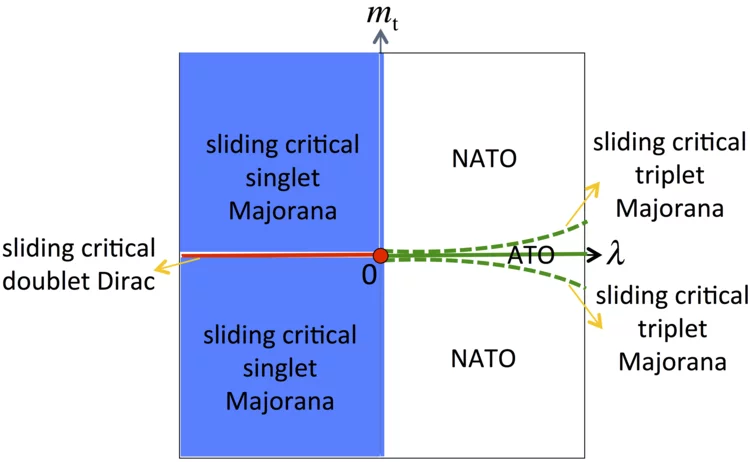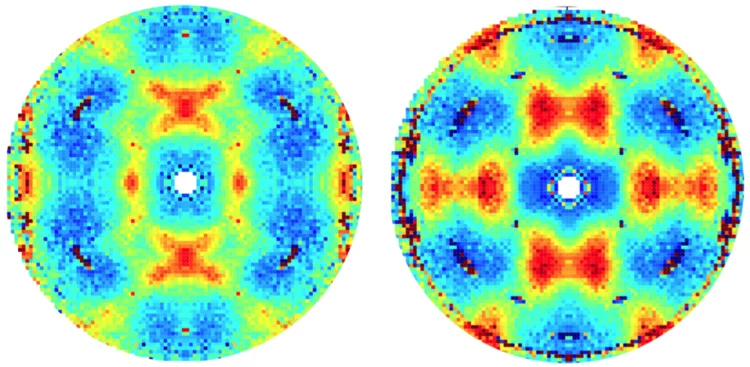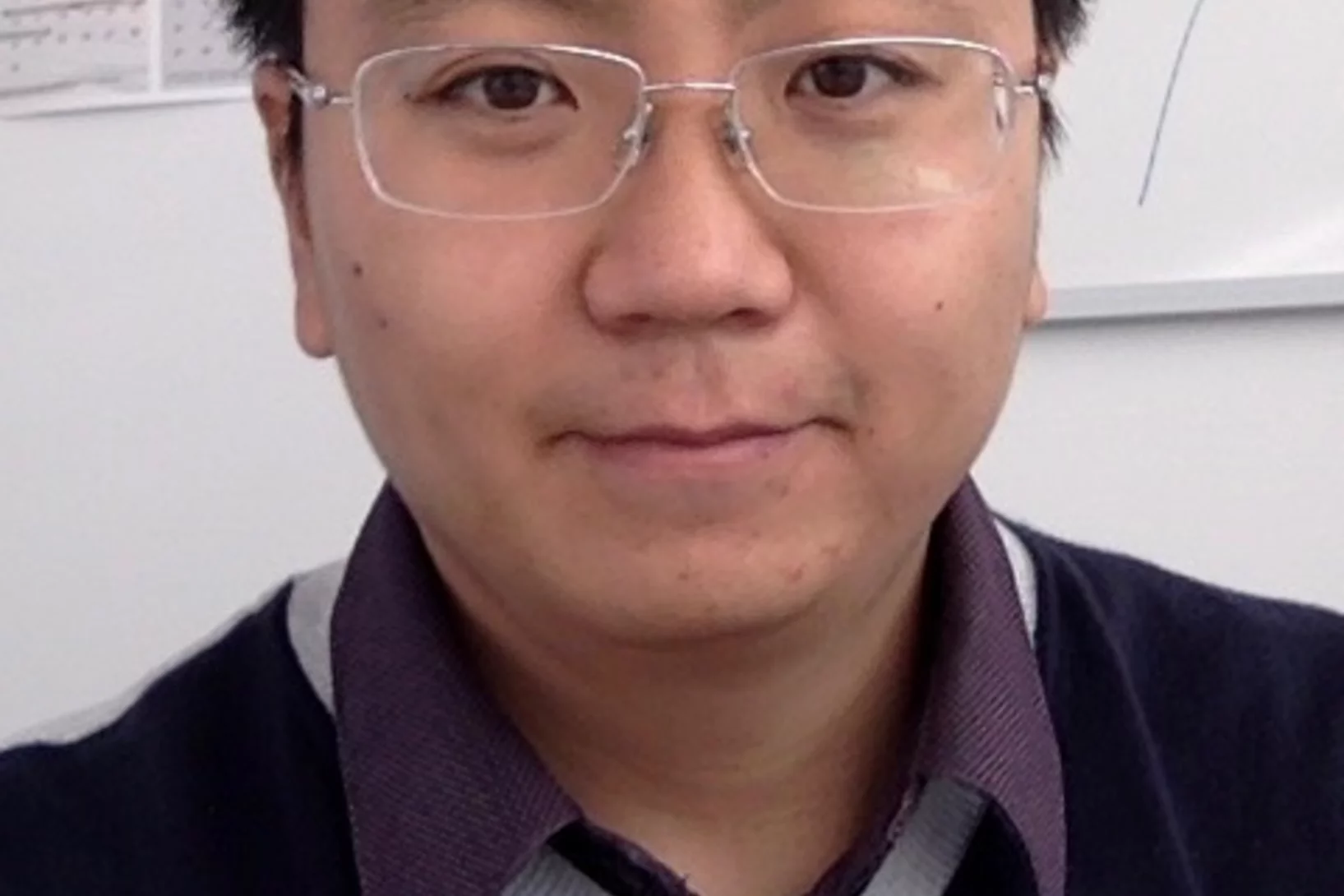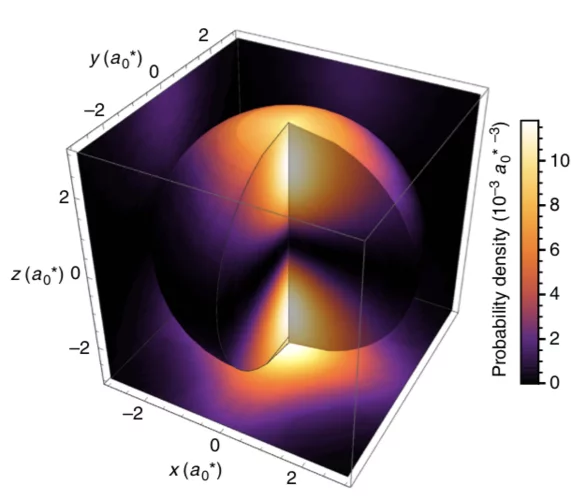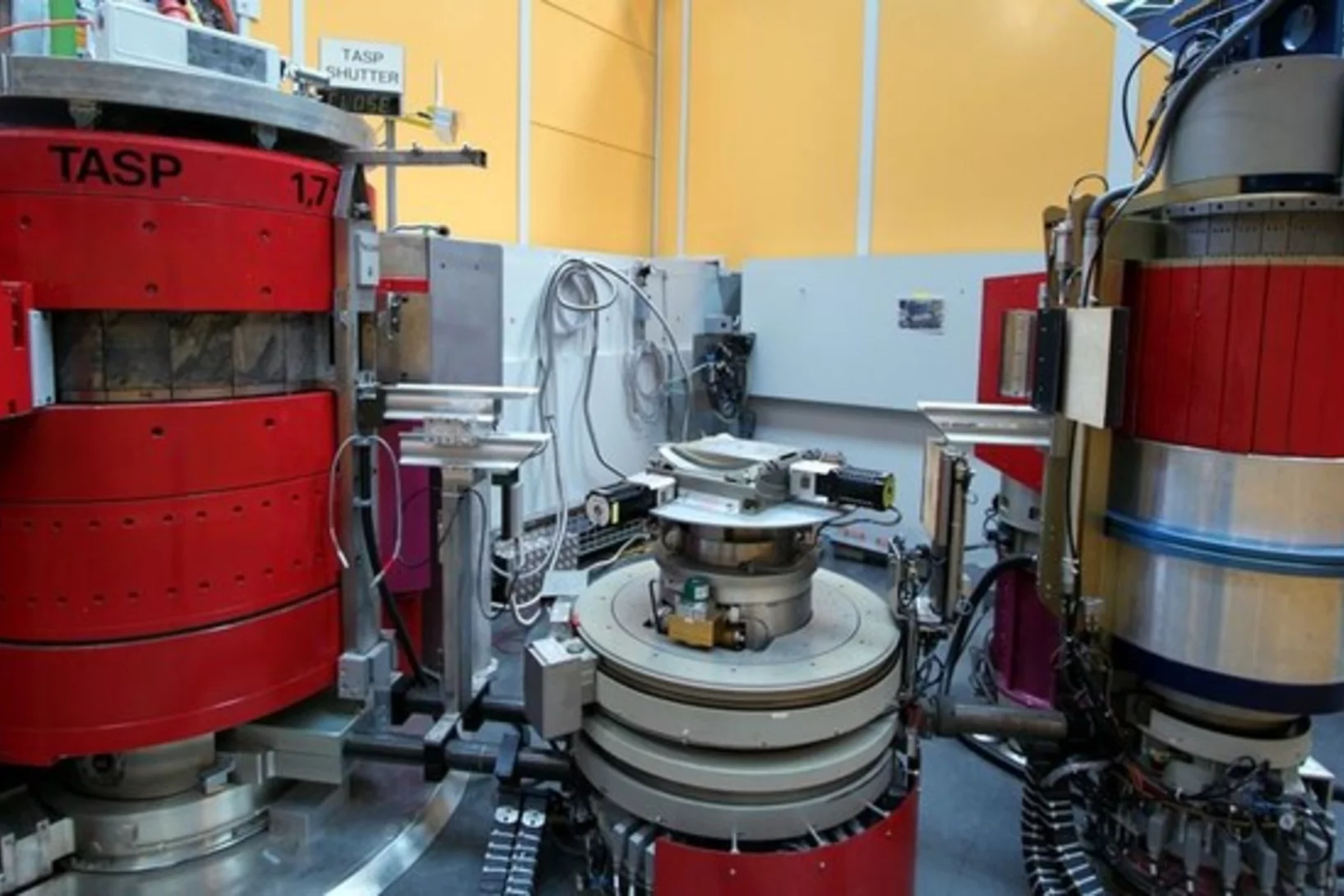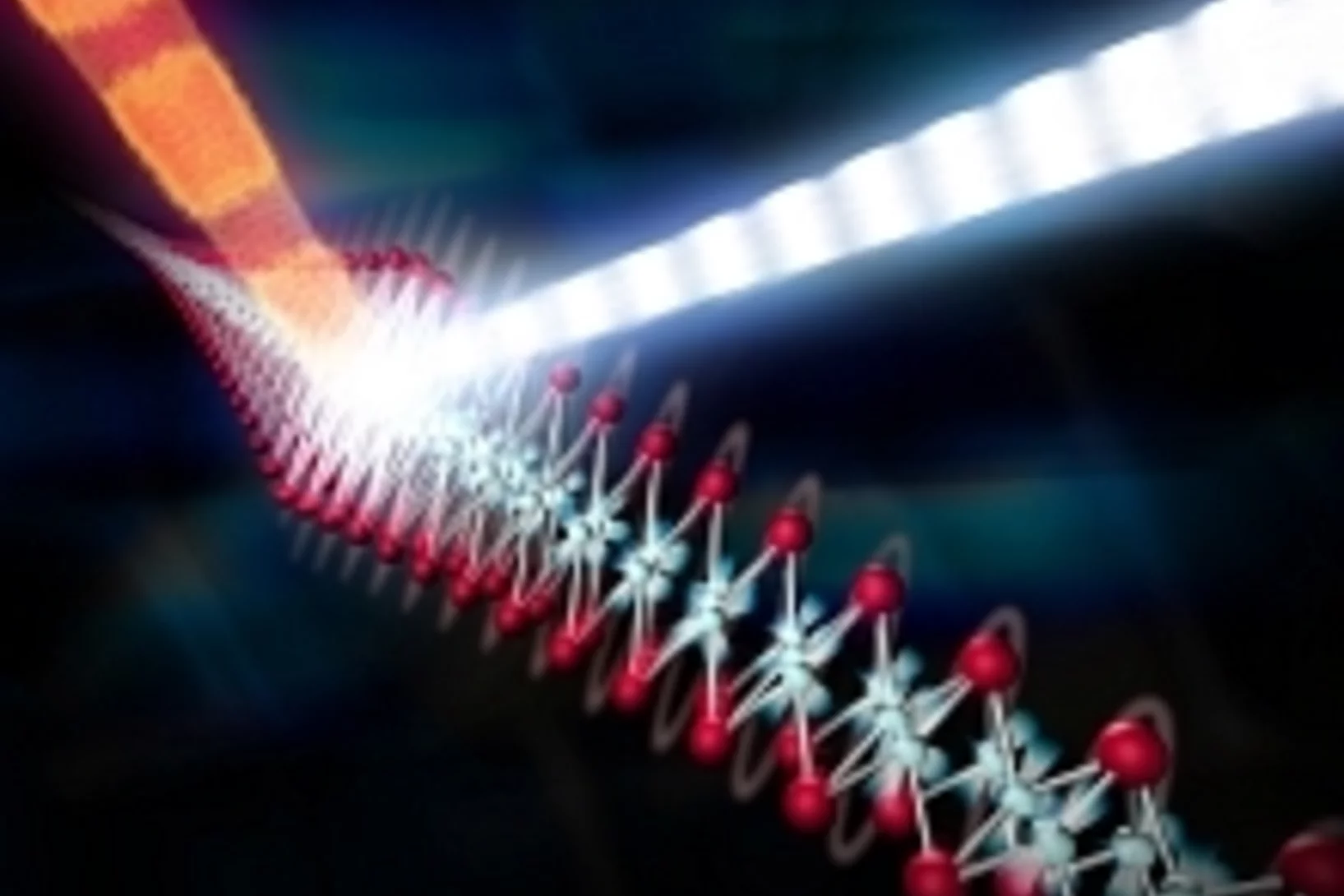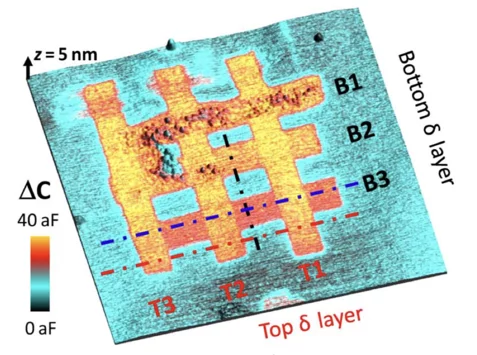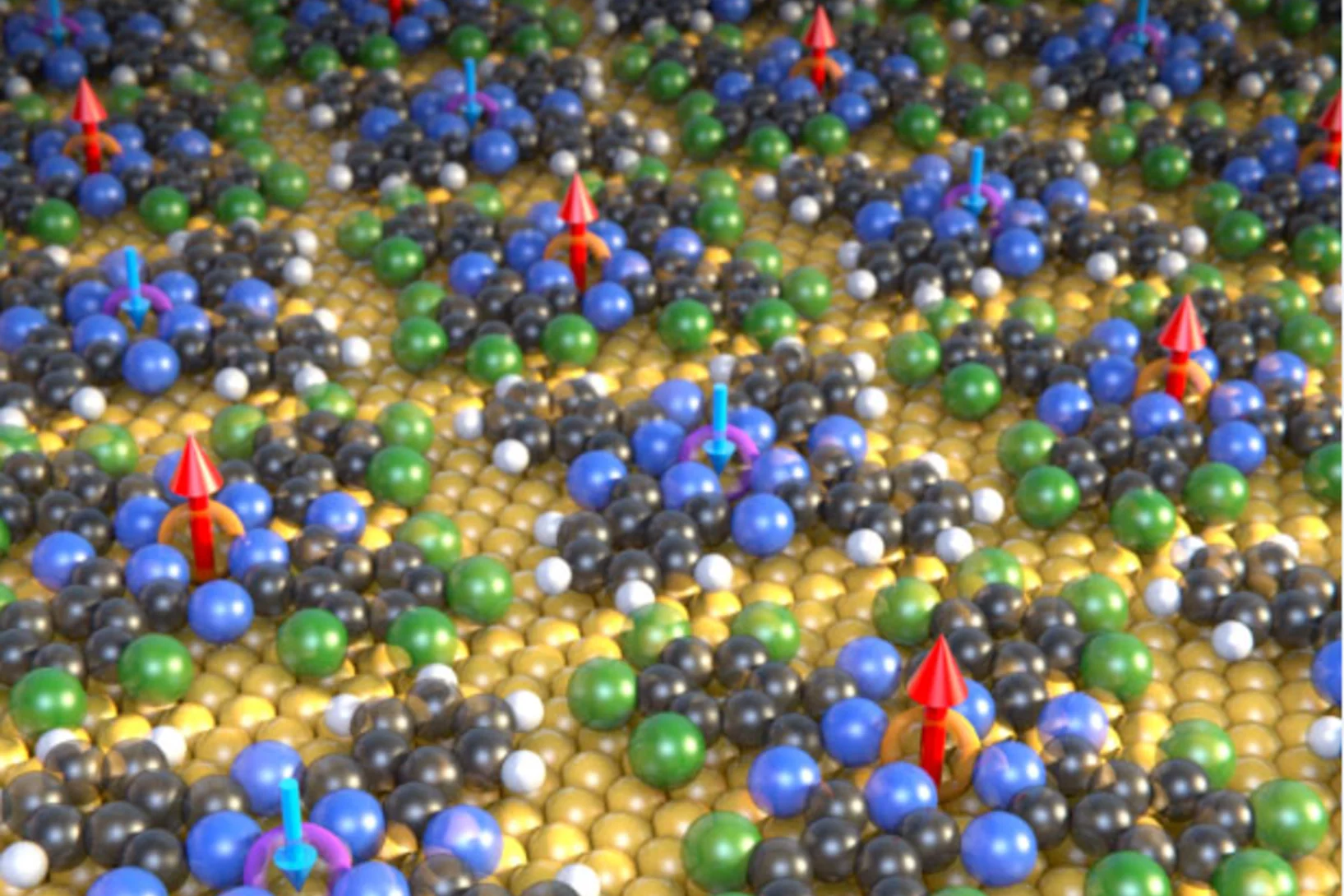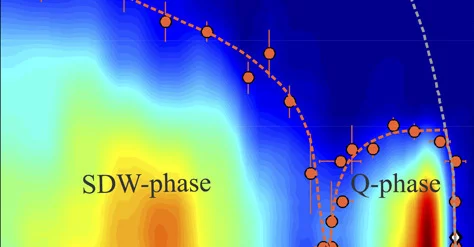Nouveau plan de construction pour des ordinateurs quantiques plus stables
Des chercheurs du PSI ont montré comment des bits quantiques plus rapides et plus précis peuvent être créés. Leurs idée centrale est d'introduire de manière ciblée des atomes magnétiques de la classe des terres rares dans le réseau cristallin d’un matériau.
Magnetic vortices come full circle
The first experimental observation of three-dimensional magnetic ‘vortex rings’ provides fundamental insight into intricate nanoscale structures inside bulk magnets, and offers fresh perspectives for magnetic devices.
Harnessing components from the optical internet for programmable spectroscopy
A novel concept for extracting information from spectra where traditional post-processing procedures fail, dubbed ‘software-defined spectroscopy’, offers a fresh approach to high-resolution terahertz spectroscopy. The new method implements an ‘optical comb’ and combines it with a programmable modulator, all using components from the optical internet.
Scientists develop a new kind of qubit based on the concept of Schrödinger’s cat
Scientists in the Applied Physics department of Yale University – one of the leading authors, Alexander Grimm, has in the meantime relocated to PSI – have developed a new device that combines the Schrödinger’s cat concept of superposition (a physical system existing in two states at once) with the ability to fix some of the trickiest errors in a quantum computation.
The tiniest secrets of integrated circuits revealed
New research has demonstrated that the secrets of the tiniest active structures in integrated circuits can be revealed using a non-destructive imaging technique. The breakthrough required the efforts of an international team of scientists from JKU and Keysight Technologies (Austria), ETH/EPFL/PSI and IBM Research - Europe (Switzerland) and from UCL (UK).
Spin ice expands to higher orders
With experimental work demonstrating that the correlated ground state of the pyrochlore system Ce2Sn2O7 is a quantum liquid of magnetic octupoles, an international team led by PSI researcher Romain Sibille establishes a fundamentally new state of matter: higher-rank multipole ice.
Des nanomondes en 3D
Des images tomographiques de l’intérieur de fossiles, de cellules cérébrales et de puces informatiques fournissent des éléments de connaissance sur leurs structures les plus fines. Ce sont les rayons X de la Source de Lumière Suisse SLS qui permettent de réussir ces images en 3D grâce à des instruments ultra-modernes, des détecteurs développés au PSI et des algorithmes informatiques sophistiqués.
Emergence of Nontrivial Low-Energy Dirac Fermions in Antiferromagnet EuCd2As2
When magnetism meets topology, colorful novel states can emerge in condensed matter. It is widely believed that parity-time symmetry plays an essential role for the formation of Dirac states in Dirac semimetals. So far, all of the experimentally identified topological nontrivial Dirac semimetals possess both parity and time reversal symmetry. Since the magnetism will break time-reversal symmetry, only in special cases the Dirac states can be protected in a magnetic system. Thus, the realization of magnetic topological Dirac materials remains a major issue in the research of topological physics. In this work, the authors ascertained that the ground state of EuCd2As2 is a good candidate for magnetic topological Dirac semimetal when the spins point in the out-of-plane direction in the A-type antiferromagnetic phase. The Dirac state is protected by the combination of parity-time symmetry with additional translation operation. Moreover, when the spins deviate from out-of-plane direction, the bulk Dirac cone will open a gap, and the system develops into a novel state containing axion insulator, antiferromagnetic topological crystalline insulator, and higher order topological insulator.
A link between quantum magnetism and electronic band topology
Muon spin rotation experiments establish a quantitative link between the magnetic and topological electronic properties of the kagome magnet Co3Sn2S2 — and demonstrate effective ways for tuning these properties.
The multi-layered physics of layered superconductors
Muon spin rotation experiments provide unique microscopic insight into the superconductivity and magnetism of transition metal dichalcogenides — and reveal complex and unconventional patterns, hinting towards a common mechanism for and electronic origin of ‘unconventional’ superconductivity.
Des fermions de Weyl découverts dans une nouvelle classe de matériau
Jusqu’ici, l’existence de particules d’un genre spécial appelées fermions de Weyl n’avait pu être démontrée que dans certains matériaux non magnétiques. Mais des chercheurs du PSI ont maintenant réussi pour la première fois à prouver expérimentalement leur présence dans un matériau paramagnétique particulier.
First demonstration of a Germanium laser
Scientist at the Paul Scherrer Institut and ETH Zürich, with colleagues from CEA Grenoble, have demonstrated and characterized a technology that, for the first time, yields lasing from strained elemental Germanium. This achievement underlines PSI’s leading role in the development of Silicon-compatible laser light sources.
First Demonstration of Sub-femtosecond X-ray Pulses at SwissFEL
We have produced ultra-short X-ray FEL pulses at SwissFEL by strongly compressing low-charge electron beams. Single-shot spectral measurements with only a single mode (see the figure below) indicate a pulse duration well below one femtosecond (detailed analysis on the exact pulse duration is ongoing).
From semiconductors to quantum technologies symposium
While information technology over the last 50 years has been based on conventional semiconductor electronics, future technologies – aiming to enhance the performance of computers, sensors and to secure data communication for the future internet – will use the quantum origins of nature.
This symposium highlighted the opportunities for the traditional semiconductor materials to remain the platform on which also the new quantum technologies will build on. The symposium, in part a celebration of the career of PSI Quantum Technologies group leader Hans Sigg, was held at ETHZ and included notable speakers both local and international, Gabriel Aeppli (PSI, ETHZ & EPFL), Jérôme Faist & Klaus Ensslin (ETHZ), Theo Rasing (RU Nijmegen), Giordano Scappucci (QuTech-TU Delft) and Klaus von Klitzing (MPI Stuttgart).
Un matériau innovant qui présente aussi de nouvelles quasi-particules
Des chercheurs du PSI ont analysé à la Source de Lumière Suisse SLS un matériau cristallin innovant qui présente des propriétés électroniques encore jamais vues à ce jour. Ils ont entre autres réussi à détecter un nouveau type de quasi-particules appelées fermions de Rarita-Schwinger.
Supramolecular architectures of molecularly thin yet robust free-standing layers
In a collaboration within the network of the Swiss Nanoscience Institute, the formation of free-standing molecular monolayers using self-assembly processes has been demonstrated. The results of the study have been published in the February 2019 issue of Science Advances.
Data storage using individual molecules
The research group of Prof. T.A. Jung at the University of Basel has reported on a new method that allows the physical state of just a few atoms or molecules within a network to be controlled.
L'UE accorde 14 millions à des chercheurs suisses
Une prestigieuse bourse de l’Union européenne a été décernée à une équipe incluant trois chercheurs du Domaine des EPF. Les scientifiques ont reçu aujourd’hui le contrat signé de l’UE qui confirme ce financement exceptionnellement important de 14 millions d’euros. Ce montant va leur permettre d’étudier certains effets quantiques qui pourraient constituer l’épine dorsale de l’électronique du futur.
A theory for the gapless field-induced quantum spin-liquid phase of α−RuCl3
The material α−RuCl3 continues to garner attention as the current poster child for realising the Kitaev model. New work places recent experimental observations on a solid theoretical footing, and concludes that the physics of α−RuCl3 is not dominated by Kitaev interactions.
Spin ice goes quantum
Numerous intriguing behaviours have been observed already in magnetic materials known as spin ices. But now for the first time direct manifestations of quantum mechanical effects have been seen in such a system.
Giant multiphoton absorption points towards new methods for THz quantum control
In findings recently published in Nature Photonics, a team including researchers from the UK, the Netherlands and Photon Sciences division head Gabriel Aeppli have investigated multi-photon THz absorption in Si:P. Their studies, using the THz free-electron laser FELIX, discovered a two photon absorption cross-section ten orders of magnitude higher than that of a natural hydrogen atom and may enable new methods in quantum control. In addition to the original publication their findings are also discussed in a 'News and Views' article.
Coupled quantum wires realize Abelian and non-Abelian topological order in two-dimensional space
Christopher Mudry and his collaborators have shown theoretically how to construct strongly interacting phases of matter that realize topological order in two-dimensional space by strongly coupling quantum wire. Remarkably, their model supports both Abelian topological order (ATO) and non-Abelian topological order (NATO) with a continuous phase transition separating them. Read the full paper here
Frustratingly disordered
A study of how disorder affects a ‘frustrated’ magnet reveals a surprising robustness of the underlying quantum many-body state, and provides evidence for emerging quantum phenomena induced by disorder.
Dr. Nan Xu awarded SPS 2017 Prize in Condensed Matter Physics
The SPS 2017 Prize in Condensed Matter Physics, sponsored by IBM, has been awarded to Dr. Nan Xu for his excellent work on topological quantum states. Dr. Nan Xu is a joint postdoc of Paul Scherrer Institute (PSI) and the École Polytechnique Fédérale de Lausanne (EPFL).
Coherent superpositions of three states for phosphorous donors in silicon prepared using THz radiation
Superposition of orbital eigenstates is crucial to quantum technology utilizing atoms, such as atomic clocks and quantum computers, and control over the interaction between atoms and their neighbours is an essential ingredient for both gating and readout. A team of researchers including Photon Science division head Gabriel Aeppli has demonstrated THz laser pulse control of Si:P orbitals using multiple orbital state admixtures, observing beat patterns produced by Zeeman splitting. The beats are an observable signature of the ability to control the path of the electron, which implies we can now control the strength and duration of the interaction of the atom with different neighbours. This could simplify surface code networks which require spatially controlled interaction between atoms. The full article can be read in Nature Communications
New quantum state observed in a Shastry–Sutherland compound
Scientists from PSI and the École polytechnique fédérale de Lausanne (EPFL) have shown experimentally, for the first time, a quantum phase transition in strontium copper borate, the only material to date that realizes the famous Shastry–Sutherland quantum many-body model.
Scientists get first direct look at how electrons ‘dance’ with vibrating atoms
Scientists at the SLAC National Accelerator Laboratory and Stanford University - one of the leading authors, Simon Gerber, has in the meantime relocated to PSI - have made the first direct measurements, and by far the most precise ones, of how electrons move in sync with atomic vibrations rippling through an quantum material, in the present study an unconventional superconductor, as if they were “dancing" to the same beat.
Nondestructive imaging of atomically thin nanostructures buried in silicon
A team of researchers including Photon Sciences division head Gabriel Aeppli have demonstrated the first non-destructive imaging of atomically thin nanostructures in silicon. Such structures are the building blocks of quantum devices for physics research and are likely to serve as key components of devices for next-generation classical and quantum information processing. Until now, the characteristics of buried dopant nanostructures could only be inferred from destructive techniques and/or the performance of the final electronic device; this severely limits engineering and manufacture of real-world devices based on atomic-scale lithography. In work recently published in Science Advances, the team use scanning microwave microscopy (SMM) to image and electronically characterize three-dimensional phosphorus nanostructures fabricated via scanning tunneling microscope based lithography.
Wafer-thin Magnetic Materials Developed for Future Quantum Technologies
For the first time, researchers have produced a wafer-thin ferrimagnet, in which molecules with different magnetic centers arrange themselves on a gold surface to form a checkerboard pattern. Scientists at the Paul Scherrer Institute, in collaboration with their research partners, published the findings in the journal Nature Communications.
Distinct, but not so different
Among superconducting materials, CeCoIn5 stands out as a rare case where superconductivity gives rise to magnetic order. An international team led by PSI physicist Michel Kenzelmann now reports that when small amounts of impurities are implanted into CeCoIn5, then two distinct magnetic phases appear — and these are surprisingly similar to one another.

